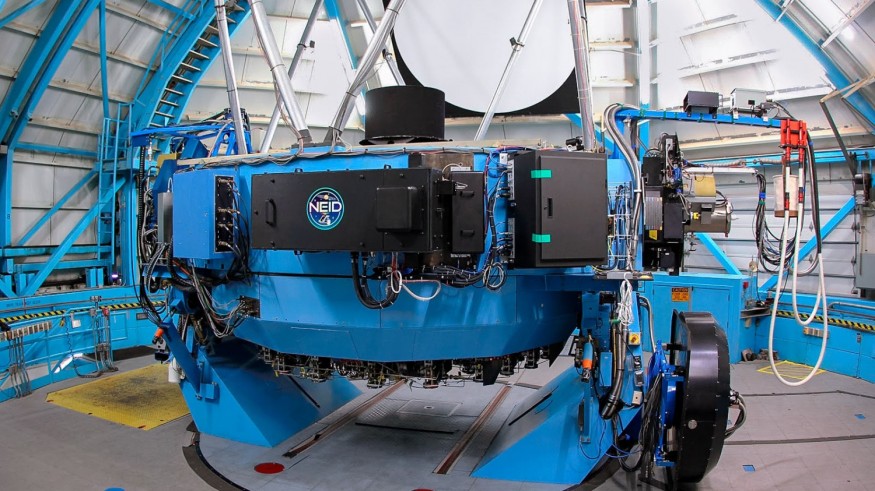Kitt Peak National Observatory has begun its exoplanet hunt by finally operating one of the best and accurate planet finders. Located in the southwestern region of Tucson, Arizona, the said observatory contains a specialized spectrometer, also called NEID. The instrument was recently successful in finding an exoplanet.
With the data gathered from the discovery, the experts at Kitt Peak National Observatory finally had the opportunity to dig deeper into the mystery of planets outside of our solar system.
What Is the NEID Spectrometer?

The NEID spectrometer is a planet detector that specifically finds celestial bodies similar to Earth. The spectrometer uses a unique technology to look for undiscovered planets outside the solar system. According to a report by MirageNews, NEID can identify outsider planets by measuring the light emitted from distant stars. All the changes recorded from the stars, even the slightest light alterations, are theorized to be an effect of gravitational tug exhibited by the star's neighboring cosmic bodies, including planets. The fluctuations presented by the stars are then evaluated to know the nearby object's estimated size.
NEID is a word inspired by the Tohono O'odham phrase 'to see.' Kitt Peak acquired the spectrometer through the collaborative effort of the National Aeronautics and Space Administration and the National Science Foundation, combined with the expertise from Penn State University and the University of Arizona.
NEID instrument expert and Steward Observatory associate astronomer Chad Bender said that the selected exoplanet-hunting method for the spectrometer was very useful and has been proven to provide comprehensive data since the 1990s. Compared to the previous instruments, NEID is the most promising spectrometer yet for our generation. Bender added that the NEID team is exceeding the boundaries from the spectrometer's predecessors and emphasized that the research is much more sensitive compared to the previous instruments that utilized the same exoplanet-hunting technique.
Searching for Exoplanets Similar to Earth
The spectrometer specializes in looking for exoplanets that have mass relatively similar to Earth. According to KOLD, Bender said that finding different sizes of exoplanets, especially the tiny ones, is undoubtedly challenging. To identify a smaller exoplanet, the NEID experts use a high-accuracy measurement technique to read data from the stars nearby, as smaller planets are known to have less influence on stars.
Kitt Peak National Observatory currently has 30 to 40 stars for examinations, and this collection of stars will be the key to unravel new, undiscovered planets outside our solar system anytime between three to five years.
NASA could speed up the identification of exoplanets with the help of the data gathered by other ongoing missions and instruments, such as the Kepler and the Transiting Exoplanet Survey Satellite or TESS.The additional data from these missions could provide imaging surveys through the transit method, where measuring the planet size is determined through the fluctuating starlight as a planet passes over a star.
NEID spectrometer is located at the top of the WIYN Observatory in southern Arizona. WIYN is a 3.5-meter space telescope housed by the Kitt Peak National Observatory.
RELATED ARTICLE : NASA Perseverance Mars Rover's Collected Rock Sample Mysteriously Disappeared, Here's What Happened
Check out more news and information on Space in Science Times.












